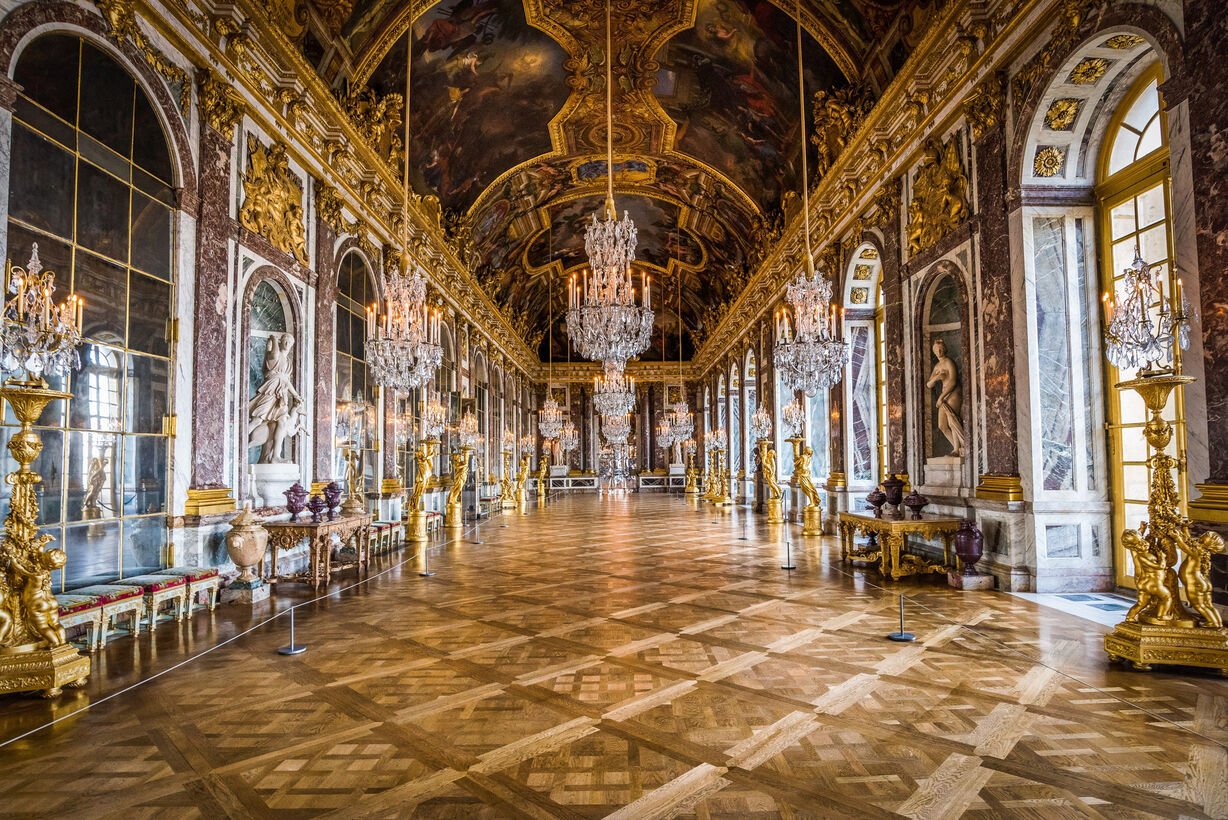The Palace of Versailles stands as a testament to the power and wealth that the French royal family had before its demise. It was originally constructed in 1682 under the order of King Louis XIV, the Sun King, and served as the royal residence until his grandson, Louis XVI, was removed during the French Revolution in 1789.
A total of 700 rooms are found within the 720,000-square-foot palace that rests on more than 2,000 acres just outside of Paris. Yes, that makes it one of the largest palaces in the world.
The Palace of Versailles is a magnificent example of French Baroque architecture. The gigantic scale of Versailles exemplifies the architectural theme of ‘creation by division’ – a series of simple repetitions rhythmically marked off by the repetition of the large windows – which expresses the fundamental values of Baroque art and in which the focal point of the interior, as well as of the entire building, is the king’s bed. Among its celebrated architectural designs is the Hall of Mirrors (Galerie des Glaces), which is one of the most famous rooms in the world. Located some 20 kilometres southwest of Paris, and set amidst extensive grounds, the palace and its decoration stimulated a mini-renaissance of interior design, as well as decorative art, during the 17th and 18th centuries.

A court of 3,000 residents, including the king and queen, members of the royal family, government ministers, aristocrats, diplomats, civil servants and the like, required a suitably grand building, and no expense was spared. Indeed, the new complex became the apogee of palace architecture. Surrounded by 800 hectares of immaculate gardens, with beautiful vistas, fountains and statues, the palace contained several symmetrical suites of apartments for the public and private use of the king and queen, as well as numerous other architectural highlights.
These included The Hall of Mirrors (1678-90) – the central gallery of the Palace – which comprised 17 mirror-clad arches reflecting the 17 windows. A total of 357 mirrors were used in its decoration. The ornamentations – the canvases along the ceiling that celebrate the apotheosis of the king, the polychrome marbles, the gilt bronzes -were organized by Le Brun, and in this undertaking he can be said to have reached the peak of the expressive possibilities of French Baroque art. Another famous room is the Royal Opera of Versailles, designed by Ange-Jacques Gabriel (1698-82), which can seat up to 1200 guests. It was one of the earliest expressions of the Louis XVI style.
Other important reception rooms, included: the Salons of Hercules, Diane, Mars, Mercury, Apollo, Jupiter, Saturn and Venus, all named after Roman gods and goddesses. The rooms were decorated with mural painting, much of it by Le Brun, who was strongly influenced by the Italian tradition of architectural Baroque painting, as exemplified by the quadratura illusionism of Pietro da Cortona (1596-1669) at the Pitti Palace in Florence. Additional building works as well as alterations to the gardens, were instigated by both Louis XV and Louis XVI, but no major changes took place.

